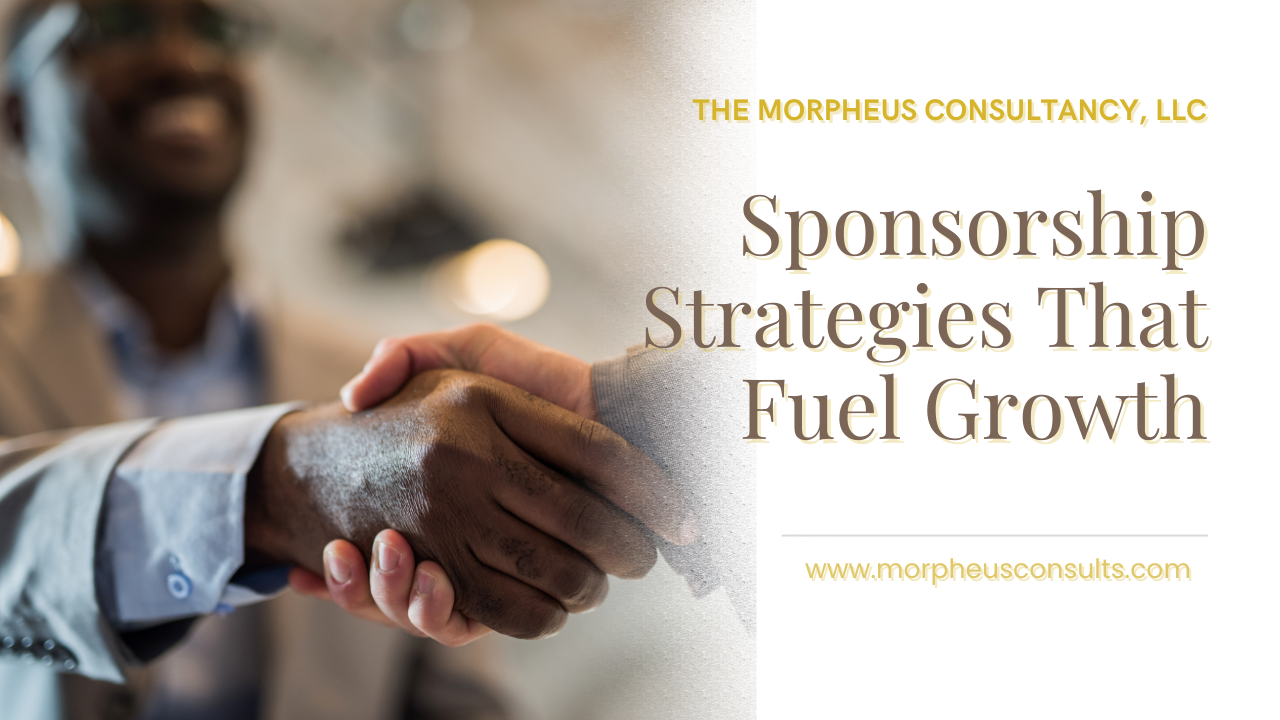
Sponsorship Strategies That Fuel Growth (2025 Edition)

Why Sponsorships Still Matter in 2025
With high interest rates, slowed economic growth, and rising operational costs, small and midsize businesses are being cautious. But one thing hasn't changed: strategic sponsorships still create value—especially when done right.
Sponsorship isn’t just for big names anymore. In 2025, it’s a tool to:
Boost visibility
Build trust through values alignment
Access new resources
Grow without traditional ad spend
The landscape has shifted, though. In 2024, marketing budgets dropped to 7.7% of revenue, down from 9.1% the year before. Yet total sponsorship spending still rose by 4%—with sponsors becoming pickier, not absent.
So how do you adapt? Below are five strategies—each grounded in real examples from the Midwest—to help you structure win-win sponsorships that thrive even in lean times.
1. Align with Sponsor Values (Not Just Exposure)
In today’s market, sponsors want more than eyeballs—they want meaning.
They’re investing in partnerships that support their values:
Health & wellness
Sustainability
Equity & inclusion
Local economic development
Tip: Frame your proposal as their mission in action. Study their CSR reports or press releases. Make the alignment undeniable.
Chicago Example: Walgreens partnered with Dion’s Chicago Dream to fight food insecurity, not for brand awareness—but because it aligned with Walgreens’ community health equity goals. This opened funding because of the values match, not despite the economic climate.
2. Get Creative with In-Kind Sponsorships
In-kind contributions are increasingly common—because they cost sponsors less out-of-pocket while delivering you real value.
What to ask for:
Free services (e.g., design, legal consults, transportation)
Product donations (e.g., equipment, gift cards, software)
Volunteer labor or internal promotions
Midwest Example: Lyft has supported nonprofit events with ride credits. Chicago Blackhawks donate memorabilia for fundraising raffles. These save organizations thousands—and create buzz for the sponsor.
Pro tip: Quantify the value of in-kind gifts (“$3,000 in services”) in your thank-yous and reports. It helps sponsors justify continuing the relationship.
3. Focus on ROI + Flexibility
In 2025, sponsors need measurable returns. That means your pitch should offer:
Audience demographics
Estimated impressions or reach
Lead generation opportunities
Social media tie-ins
Be flexible. Propose scalable tiers. Offer year-round visibility instead of one-time signage.
Real Example: The Nursing Organizations Alliance revamped its approach by co-creating unique activations with sponsors—like wellness booths and branded workshops. This helped sponsors engage directly and justify their spend.
4. Turn Sponsors into Long-Term Partners
In this environment, retention > acquisition.
✔️ Stay in touch year-round
✔️ Show impact with mini reports
✔️ Offer early renewal or multi-year options
Chicago Example: Wintrust Bank signed a multi-year sponsorship with the Harold E. Eisenberg Foundation in 2024. The ongoing partnership gave both sides stability and brand continuity in the community.
Try this: Incentivize 2-year sponsorships with locked-in rates or bonus perks. Relationship-first = renewal-ready.
5. Spotlight Local Impact (Especially in the Midwest)
Many Midwest companies want to invest locally—not just nationally. Highlight how your program benefits:
The community they serve
Their future workforce
Local families or youth
Chicago Example: City-led business expos were sponsored by Wintrust, CIBC, and Peoples Gas—all committed to strengthening local entrepreneurship.
Even small neighborhood events like the Ravenswood “Holly Jolly Trolley” attracted sponsors like Urban Pooch and Hazel Gifts—because community goodwill translates to customer loyalty.
Your move: Don’t just chase national brands. Target banks, health systems, and family-owned businesses rooted in your city. These often have untapped partnership budgets—and a mandate to give back locally.
Conclusion: Make Sponsorships Work in 2025
Today’s economic climate is tough. But purpose-driven sponsorships are still thriving—because they’re lean, mission-aligned, and collaborative.
Focus on:
Values, not vanity
Flexibility, not fixed tiers
Impact, not impressions
Relationships, not transactions
Need Help Structuring a Strategy That Works?
At The Morpheus Consultancy, we help organizations like yours build meaningful sponsorship partnerships—designed for long-term value and aligned with today’s economy.
Let’s talk. Whether you need proposal support, a sponsorship deck, or partner targeting—we’ve got you covered.

